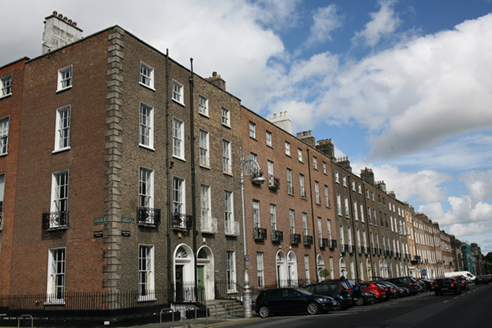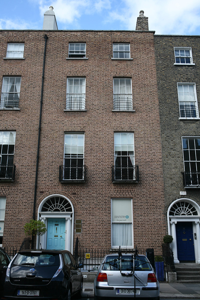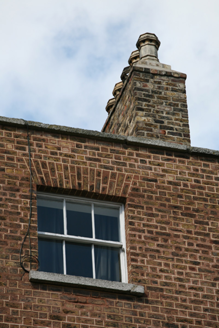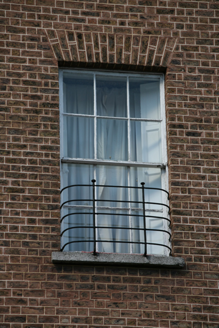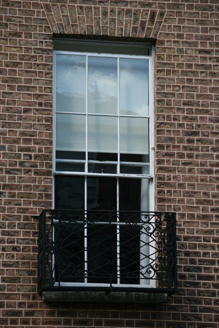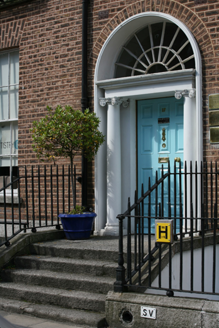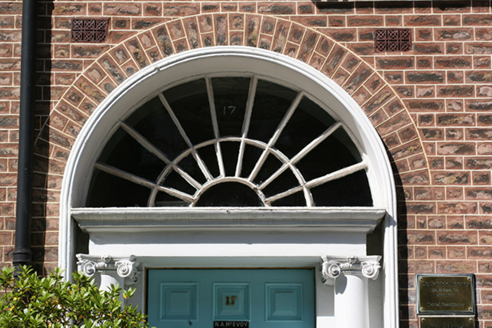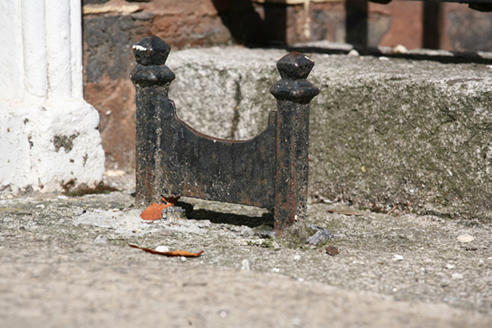Survey Data
Reg No
50930074
Rating
Regional
Categories of Special Interest
Architectural, Artistic
Original Use
House
In Use As
Office
Date
1810 - 1830
Coordinates
316599, 233128
Date Recorded
09/09/2015
Date Updated
--/--/--
Description
Terraced two-bay four-storey over basement former townhouse, built c. 1820, now in use as offices and dental practice. M-profile pitched slate roof, hipped to south on rear (west) pile only and set behind parapet wall with granite coping, cast-iron hopper and downpipe breaking through to south end. Shouldered brick chimneystacks to north with octagonal-profile clay pots. Buff brick walls laid in Flemish bond with lime tuck pointing. Granite plinth course over rendered basement wall. Gauged brick square-headed window openings with granite sills and timber sash windows; replacement three-over-three to third floor, original six-over-six pane to first and second floors with some historic glass, replacement one-over-one to ground floor and original eight-over-eight to basement. Wrought-iron sill-guards to second floor with decorative cast- and wrought-iron balconettes to first floor. Gauged brick round-headed opening with masonry Ionic doorcase comprising square-headed door opening flanked by Ionic columns supporting lintel entablature with original spoked fanlight. Original timber panelled door with eleven raised-and-fielded panels opening onto granite platform with iron boot scraper and granite steps to street. Platform and basement enclosed by original wrought- and cast-iron railings set on granite plinth wall with steel steps providing access to basement with replacement timber glazed door below platform. Forming part of a continuous terrace of former townhouses lining west side of Fitzwilliam Street Upper.
Appraisal
A handsome terraced early-nineteenth century former townhouse retaining its original façade composition and much historic external fabric, including timber sash windows and well-executed ironwork. The granite dressings contrast with the mellow brick, adding colour and textural interest, while the fine Ionic doorcase and fanlight forms the decorative focus. It forms part of a long terrace of former residences and contributes significantly to the coherent appearance of the streetscape in the heart of the south Georgian core.
